Biography of Walt Disney, Animator and Film Producer
Love of drawing, laugh-o-gram films, mickey mouse, sound and color, feature-length cartoons, union strikes, world war ii, more movies, plans for disneyland, disneyland opens, plans for walt disney world, florida.
Walt Disney (born Walter Elias Disney; December 5, 1901–December 15, 1966) was a cartoonist and entrepreneur who developed a multibillion-dollar family entertainment empire. Disney was the renowned creator of Mickey Mouse, the first sound cartoon, the first Technicolor cartoon, and the first feature-length cartoon. In addition to winning 22 Academy Awards in his lifetime, Disney also created the first major theme park: Disneyland in Anaheim, California.

Fast Facts: Walt Disney
- Known For: Disney was a pioneering animator and film producer who won 22 Academy Awards and built one of the largest media empires in the world.
- Born: December 5, 1901 in Chicago, Illinois
- Parents: Elias and Flora Disney
- Died: December 15, 1966 in Burbank, California
- Awards and Honors: 22 Academy Awards, Cecil B. DeMille Award, Hollywood Walk of Fame, Presidential Medal of Freedom, Congressional Gold Medal
- Spouse: Lillian Bounds (m. 1925-1966)
- Children: Diane, Sharon
Walt Disney was born the fourth son of Elias Disney and Flora Disney (née Call) in Chicago, Illinois, on December 5, 1901. By 1903, Elias, a handyman and carpenter, had grown weary of crime in Chicago; thus, he moved his family to a 45-acre farm he purchased in Marceline, Missouri. Elias was a stern man who administered “corrective” beatings to his five children; Flora soothed the children with nightly readings of fairy tales.
After the two eldest sons grew up and left home, Walt Disney and his older brother Roy worked on the farm with their father. In his free time, Disney made up games and sketched the farm animals. In 1909, Elias sold the farm and purchased an established newspaper route in Kansas City, where he moved his remaining family.
It was in Kansas City that Disney developed a love for an amusement park called Electric Park, which featured 100,000 electric lights illuminating a roller coaster, a dime museum, penny arcade, swimming pool, and a colorful fountain light show.
Rising at 3:30 a.m. seven days a week, 8-year-old Walt Disney and brother Roy delivered the newspapers, taking quick naps in alleyways before heading to Benton Grammar School. In school, Disney excelled in reading; his favorite authors were Mark Twain and Charles Dickens.
In art class, Disney surprised his teacher with original sketches of flowers with human hands and faces. After stepping on a nail on his newspaper route, Disney had to spend two weeks in bed recuperating. He spent his time reading and drawing newspaper-style cartoons.
Elias sold the newspaper route in 1917 and bought a partnership in the O-Zell Jelly factory in Chicago, moving Flora and Walt with him (Roy had enlisted in the U.S. Navy). Sixteen-year-old Walt Disney attended McKinley High School, where he became the school newspaper’s junior art editor. To pay for evening art classes at the Chicago Academy of Fine Arts, he washed jars in his father’s jelly factory.
Wanting to join Roy, who was fighting in World War I, Disney tried to join the Army but at age 16 he was too young. Undeterred, he joined the Red Cross’ Ambulance Corps, which took him to France and Germany.
After spending 10 months in Europe, Disney returned to the U.S. In October 1919, he got a job as a commercial artist at the Pressman-Rubin Studio in Kansas City. Disney met and became friends with fellow artist Ub Iwerks at the studio.
When Disney and Iwerks were laid off in January 1920, they formed Iwerks-Disney Commercial Artists. Due to a lack of clients, however, the duo only survived for about a month. After getting jobs at the Kansas City Film Ad Company as cartoonists, Disney and Iwerks began making commercials for movie theaters.
Disney borrowed a camera from the studio and began experimenting with stop-action animation in his garage. He shot footage of his animal drawings using different techniques until the pictures actually “moved” in fast and slow motion. His cartoons (which he called Laugh-O-Grams) eventually became superior to the ones he was working on at the studio; he even figured out a way to merge live action with animation. Disney suggested to his boss that they make cartoons, but his boss flatly turned down the idea, content with making commercials.
In 1922, Disney quit the Kansas City Film Ad Company and opened a studio in Kansas City called Laugh-O-Gram Films. He hired a few employees, including Iwerks, and sold a series of fairy tale cartoons to Pictorial Films in Tennessee.
Disney and his staff began work on six cartoons, each one a seven-minute fairy tale that combined live action and animation. Unfortunately, Pictorial Films went bankrupt in July 1923; as a result, so did Laugh-O-Gram Films.
Next, Disney decided he would try his luck at working in a Hollywood studio as a director and joined his brother Roy in Los Angeles, where Roy was recovering from tuberculosis.
Having no luck getting a job at any of the studios, Disney sent a letter to Margaret J. Winkler, a New York cartoon distributor, to see if she had any interest in distributing his Laugh-O-Grams. After Winkler viewed the cartoons, she and Disney signed a contract.
On October 16, 1923, Disney and Roy rented a room at the back of a real estate office in Hollywood. Roy took on the role of accountant and cameraman of the live action; a little girl was hired to act in the cartoons; two women were hired to ink and paint the celluloid, and Disney wrote the stories and drew and filmed the animation.
By February 1924, Disney had hired his first animator, Rollin Hamilton, and moved into a small storefront with a window bearing the sign “Disney Bros. Studio.” Disney’s "Alice in Cartoonland" reached theaters in June 1924.
In early 1925, Disney moved his growing staff to a one-story, stucco building and renamed his business “Walt Disney Studio.” Disney hired Lillian Bounds, an ink artist, and began dating her. On July 13, 1925, the couple married in her hometown of Spalding, Idaho. Disney was 24; Lillian was 26.
Meanwhile, Margaret Winkler also married, and her new husband, Charles Mintz, took over her cartoon distribution business. In 1927, Mintz asked Disney to rival the popular “Felix the Cat” series. Mintz suggested the name “Oswald the Lucky Rabbit” and Disney created the character and made the series.
In 1928, when costs became increasingly high, Disney and Lillian took a train trip to New York to renegotiate the contract for the popular Oswald series. Mintz countered with even less money than he was currently paying, informing Disney that he owned the rights to Oswald the Lucky Rabbit, and that he had lured most of Disney’s animators to come work for him.
Shocked, shaken, and saddened, Disney boarded the train for the long ride back. In a depressed state, he sketched a character and named him Mortimer Mouse. Lillian suggested the name Mickey Mouse instead.
Back in Los Angeles, Disney copyrighted Mickey Mouse and, along with Iwerks, created new cartoons with Mickey Mouse as the star. Without a distributor, though, Disney could not sell the silent Mickey Mouse cartoons.
In 1928, sound became the latest in film technology. Disney pursued several New York film companies to record his cartoons with this new novelty. He struck a deal with Pat Powers of Cinephone. Disney provided the voice of Mickey Mouse and Powers added sound effects and music.
Powers became the distributor of the cartoons and on November 18, 1928, "Steamboat Willie" opened at the Colon Theater in New York. It was Disney’s (and the world’s) first cartoon with sound. "Steamboat Willie" received rave reviews and audiences everywhere adored Mickey Mouse.
In 1929, Disney began making “Silly Symphonies,” a series of cartoons that included dancing skeletons, the Three Little Pigs, and characters other than Mickey Mouse, including Donald Duck, Goofy, and Pluto.
In 1931, a new film-coloring technique known as Technicolor became the latest in film technology. Until then, everything had been filmed in black and white. To hold off the competition, Disney paid to hold the rights to Technicolor for two years. He filmed a Silly Symphony titled "Flowers and Trees" in Technicolor, showing colorful nature with human faces, and the film won the Academy Award for Best Cartoon of 1932.
On December 18, 1933, Lillian gave birth to Diane Marie Disney, and on December 21, 1936, Lillian and Walt Disney adopted Sharon Mae Disney.
Disney decided to add dramatic storytelling to his cartoons, but making a feature-length cartoon had everyone (including Roy and Lillian) saying it would never work; they believed audiences just wouldn’t sit that long through a dramatic cartoon.
Despite the naysayers, Disney, ever the experimenter, went to work on the feature-length fairy tale "Snow White and the Seven Dwarfs." Production of the cartoon cost $1.4 million (a massive sum in 1937) and was soon dubbed “Disney’s Folly.”
When it premiered in theaters on December 21, 1937, though, "Snow White and the Seven Dwarfs" was a box office sensation. Despite the Great Depression, it earned $416 million.
A notable achievement in cinema, the movie won Disney an Honorary Academy Award. The citation read, "For 'Snow White and the Seven Dwarfs,' recognized as a significant screen innovation which has charmed millions and pioneered a great new entertainment field."
After the success of "Snow White," Disney constructed his state-of-the-art Burbank Studio, deemed a worker’s paradise for a staff of about 1,000 workers. The studio, with animation buildings, sound stages, and recording rooms, produced "Pinocchio" (1940), "Fantasia" (1940), "Dumbo" (1941), and "Bambi" (1942).
Unfortunately, these feature-length cartoons lost money worldwide due to the start of World War II. Along with the cost of the new studio, Disney found himself in debt. He offered 600,000 shares of common stock, sold at five dollars apiece. The stock offerings sold out quickly and erased the debt.
Between 1940 and 1941, movie studios began unionizing; it wasn’t long before Disney’s workers wanted to unionize as well. While his workers demanded better pay and working conditions, Disney believed that his company had been infiltrated by communists.
After numerous and heated meetings, strikes, and lengthy negotiations, Disney finally became unionized. However, the whole process left Disney feeling disillusioned and discouraged.
With the union question finally settled, Disney was able to turn his attention back to his cartoons; this time for the U.S. government. The United States had joined World War II after the bombing of Pearl Harbor and it was sending millions of young men overseas to fight.
The U.S. government wanted Disney to produce training films using his popular characters ; Disney obliged, creating more than 400,000 feet of film (about 68 hours).
After the war, Disney returned to his own agenda and made "Song of the South" (1946), a movie that was 30 percent animation and 70 percent live action. "Zip-A-Dee-Doo-Dah" was named the best movie song of 1946 by the Academy of Motion Picture Arts & Sciences, while James Baskett, who played the character of Uncle Remus in the movie, won an Oscar.
In 1947, Disney decided to make a documentary about Alaskan seals titled "Seal Island" (1948). It won an Academy Award for best two-reel documentary. Disney then assigned his top talent to make "Cinderella" (1950), "Alice in Wonderland" (1951), and "Peter Pan" (1953).
After building a train to ride his two daughters around his new home in Holmby Hills, California, Disney began formulating a dream in 1948 to build Mickey Mouse Amusement Park across the street from his studio. He visited fairs, carnivals, and parks around the world to study the choreography of people and attractions.
Disney borrowed on his life insurance policy and created WED Enterprises to organize his amusement park idea, which he was now referring to as Disneyland. Disney and Herb Ryman drew out the plans for the park in one weekend. The plan included an entrance gate to "Main Street" that would lead to Cinderella’s Castle and off to different lands of interest, including Frontier Land, Fantasy Land, Tomorrow Land, and Adventure Land.
The park would be clean and innovative, a place where parents and children could have fun together on rides and attractions; they would be entertained by Disney characters in the “happiest place on earth.”
Roy visited New York to seek a contract with a television network. Roy and Leonard Goldman reached an agreement where ABC would give Disney a $500,000 investment in Disneyland in exchange for a weekly Disney television series.
ABC became a 35 percent owner of Disneyland and guaranteed loans up to $4.5 million. In July 1953, Disney commissioned the Stanford Research Institute to find a location for his (and the world’s) first major theme park. Anaheim, California, was selected since it could easily be reached by freeway from Los Angeles.
Previous movie profits were not enough to cover the cost of building Disneyland, which took about a year to build at a cost of $17 million. Roy made numerous visits to the Bank of America's headquarters to secure more funding.
On July 13, 1955, Disney sent out 6,000 exclusive guest invitations, including to Hollywood movie stars, to enjoy the opening of Disneyland. ABC sent cameramen to film the opening. However, many tickets were counterfeited and 28,000 people showed up.
Rides broke down, food stands ran out of food, a heat wave caused freshly poured asphalt to capture shoes, and a gas leak caused temporary closings in a few themed areas.
Despite the newspapers referring to this cartoon-ish day as "Black Sunday," guests from all over the world loved it and the park became a major success. Ninety days later, the one-millionth guest passed through the park's turnstile.
In 1964, Disney’s "Mary Poppins" premiered; the film was nominated for 13 Academy Awards. With this success, Disney sent Roy and a few other Disney executives to Florida in 1965 to purchase land for another theme park.
In October 1966, Disney gave a press conference to describe his plans for building an Experimental Prototype Community of Tomorrow (EPCOT) in Florida. The new park would be five times the size of Disneyland, and it would include shopping, entertainment venues, and hotels.
The new Disney World development would not be completed, however, until five years after Disney’s death. The new Magic Kingdom (which included Main Street USA; Cinderella's Castle leading to Adventureland, Frontierland, Fantasyland, and Tomorrowland) opened on October 1, 1971, along with Disney's Contemporary Resort, Disney's Polynesian Resort, and Disney's Fort Wilderness Resort & Campground. EPCOT, Walt Disney’s second theme park vision, which featured a future world of innovation and a showcase of other countries, opened in 1982.
In 1966, doctors informed Disney that he had lung cancer. After having a lung removed and several chemotherapy sessions, Disney collapsed in his home and was admitted to St. Joseph’s Hospital on December 15, 1966. He died at 9:35 a.m. from an acute circulatory collapse and was buried at Forest Lawn Memorial Park in Glendale, California.
Disney left behind one of the largest media empires in the world. Since his death, the Walt Disney Company has only grown; today, it employs more than 200,000 people and generates billions in revenue each year. For his artistic achievements, Disney amassed 22 Oscars and numerous other honors. In 1960, he was given two stars on the Hollywood Walk of Fame (one for his film and one for his television work).
- David, Erica, and Bill Robinson. "Disney." Random House, 2015.
- "The Disneyland Story." Walt Disney Productions, 1985.
- What Every Entrepreneur Can Learn from Walt Disney
- Disney Store Values and Mission Statement
- 5 Famous People Who Were Fired Before Becoming Successful
- The History of Warner Bros. Animation
- The Top 50 Cartoon Characters of All Time
- The History of Hollywood's Major Movie Studios
- Disney's Animated Classic Children's Movies of the 1930s and 1940s
- The 3 Types of Animated Films
- Classic Disney Animated Movies of the 1950s
- The Most Important Movies of the 1950s
- The Life of Bela Lugosi: Hollywood's Most Famous Dracula
- Top 5 Evil Stepmothers in Animated Movies
- The Top 10 Most Dastardly Disney Villains of All Time
- Biography of Roddy McDowall, Planet of the Apes Star
- Biography of Cesar Romero, Batman's Original Joker
- What's the Deal with Walley World?

- Movies & TV
- Featured Categories
- Documentary
Image Unavailable

- Sorry, this item is not available in
- Image not available
- To view this video download Flash Player

American Experience: Walt Disney
- Prime Video $7.39
Purchase options and add-ons
Frequently bought together.

Customers who bought this item also bought

Product Description
Walt Disney was uniquely adept at art as well as commerce, a master filmmaker who harnessed the power of technology and storytelling. This new film examines Disneys complex life and enduring legacy. Features rare archival footage from the Disney vaults, scenes from some of his greatest films, interviews with biographers and animators, and the designers who helped turn his dream of Disneyland into reality.
3.5 out of 4 stars "An excellent profile of one of the most influential figures ever in the history of American entertainment, this is highly recommended." --Video Librarian
Product details
- MPAA rating : PG (Parental Guidance Suggested)
- Product Dimensions : 0.7 x 7.5 x 5.4 inches; 2.72 ounces
- Item model number : 17077557
- Media Format : Multiple Formats, NTSC, Widescreen, Color, Black & White
- Run time : 4 hours
- Release date : September 15, 2015
- Subtitles: : English
- Studio : PBS (Direct)
- ASIN : B00YJDHA7U
- Number of discs : 1
- #333 in Documentary (Movies & TV)
- #393 in Special Interests (Movies & TV)
Customer reviews
Customer Reviews, including Product Star Ratings help customers to learn more about the product and decide whether it is the right product for them.
To calculate the overall star rating and percentage breakdown by star, we don’t use a simple average. Instead, our system considers things like how recent a review is and if the reviewer bought the item on Amazon. It also analyzed reviews to verify trustworthiness.
Reviews with images

- Sort reviews by Top reviews Most recent Top reviews
Top reviews from the United States
There was a problem filtering reviews right now. please try again later..
Top reviews from other countries
- Amazon Newsletter
- About Amazon
- Accessibility
- Sustainability
- Press Center
- Investor Relations
- Amazon Devices
- Amazon Science
- Sell on Amazon
- Sell apps on Amazon
- Supply to Amazon
- Protect & Build Your Brand
- Become an Affiliate
- Become a Delivery Driver
- Start a Package Delivery Business
- Advertise Your Products
- Self-Publish with Us
- Become an Amazon Hub Partner
- › See More Ways to Make Money
- Amazon Visa
- Amazon Store Card
- Amazon Secured Card
- Amazon Business Card
- Shop with Points
- Credit Card Marketplace
- Reload Your Balance
- Amazon Currency Converter
- Your Account
- Your Orders
- Shipping Rates & Policies
- Amazon Prime
- Returns & Replacements
- Manage Your Content and Devices
- Recalls and Product Safety Alerts
- Conditions of Use
- Privacy Notice
- Consumer Health Data Privacy Disclosure
- Your Ads Privacy Choices

Walt Disney
- Overview ↓
- Filmography ↓
- Awards ↓
Biography by Wikipedia
Walter Elias Disney was an American entrepreneur, animator, voice actor and film producer. A pioneer of the American animation industry, he introduced several developments in the production of cartoons. As a film producer, Disney holds the record for most Academy Awards earned by an individual, having won 22 Oscars from 59 nominations. He was presented with two Golden Globe Special Achievement Awards and an Emmy Award, among other honors. Several of his films are included in the National Film Registry by the Library of Congress.
Movie Highlights

Additional Information
All subgenres.
Walt Disney: 7 Things You Didn't Know About the Man and the Magic
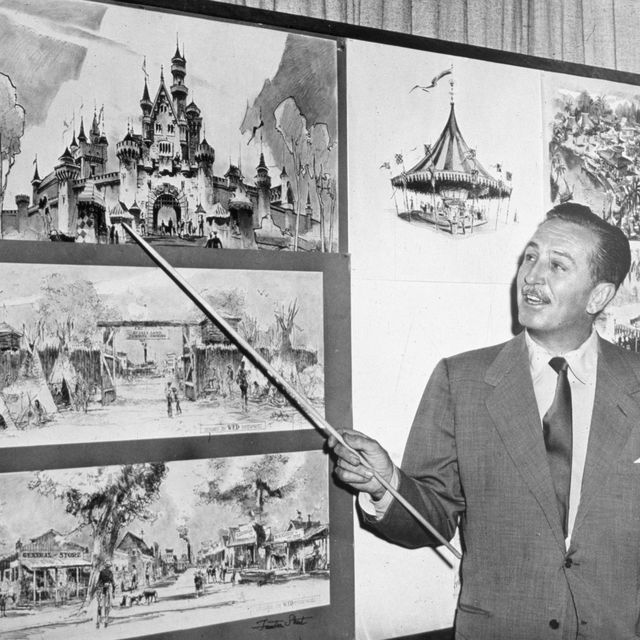
Here are seven facts you may not have known about both the man and the studio he created.
Mickey was almost named Mortimer
On a train ride following a less than fruitful business meeting in 1928, Disney, then only 27 years old, sketched a mouse. This mouse would eventually become the official mascot of a multinational corporation worth tens of billions of dollars, but Walt, of course, didn’t know this at the time. He called the sketch “Mortimer Mouse” and showed it to his wife, Lily. After deeming the name Mortimer much too pompous, Lily suggested giving the mouse a cuter name, such as Mickey. Thankfully, Walt agreed with her, and a star was born.
Disney was anti facial hair with one exception
It took almost 60 years, but, as of this year, employees at Walt Disney’s two U.S. theme parks can finally show up at work with a stylish beard or goatee (but only if they are “neat, polished, and professional,” according to the official memo). However, at Disneyland in the 50s and 60s, even guests with facial hair, not to mention longhaired hippies, were turned away, as they were told they unfortunately failed to meet the standards of Disneyland’s dress code. Even Jim McGuinn, the future frontman of The Byrds, was once denied admittance for sporting a provocative Beatle cut. The company eventually relented on this policy, though, and allowed all hirsute patrons to enjoy “The Happiest Place on Earth.” Now, the peculiar double standard: Think of any picture of Walt Disney that you have ever seen. What exists in almost all of them? A mustache.
The final words ever written by Disney were “Kurt Russell”
In 1966, as Disney was suffering from lung cancer and nearing the end of his life, he scrawled the name “ Kurt Russell ” on a piece of paper and died soon after. At the time, Russell was a child actor for the studio and had just signed a lengthy contract. To this day, no one knows what Disney meant or intended, including Russell himself.
Disney still has a home at Disneyland
During the construction of Disneyland in the 1950s, Disney moved into a one-bedroom apartment above the theme park’s Fire Station on Main Street in order to work and watch his dream come to life. The apartment still exists and has been left largely untouched. During his stay there, Disney lit a lamp in the window to alert the staff of his presence. This lamp is now permanently ablaze in his honor.
Don’t be surprised if you experience Disney déjà vu
When you first watched Disney’s Robin Hood , did you wonder if you had seen it all before? If so, there’s no need to worry. In 1915, an animation technique called rotoscoping was invented. This technique involves drawing over film footage of live actors, which allows animators to capture realistic human movement. It also lets animators recycle animated movements for use on characters in different films. So, the next time you watch Disney’s Robin Hood , just remember that large parts of it were, thanks to the studio’s use of rotoscoping, gathered from Snow White and the Seven Dwarfs , The Jungle Book , and The Aristocats .
Mickey and Minnie Mouse actually got married
Wayne Allwine and Russi Taylor are not well-known names, even among Disney aficionados, but their animated personas are seared into most people’s minds. In 1991, Allwine, who was the voice of Mickey Mouse for 32 years, married Taylor, the voice of Minnie Mouse, and the couple remained happily married until Allwine’s death in 2009.
Nobody, including Walt Disney, is perfect
While Disney was an innovative and successful man, he was also the subject of many controversies, most of which involved rumors that he was anti-Semitic and racist. These rumors were, and still are, hard to dispel. In the 1930s, Disney attended meetings of a pro-Nazi organization, the German American Bund. He also hosted a known Nazi propagandist and filmmaker, Leni Riefenstahl, and gave her a tour of Disney Studios. To make matters worse, Disney was also accused of perpetuating black stereotypes in his films. But, for all of his critics, Disney also had scores of supporters who claimed he was far from being either anti-Semitic or racist. The debate on Disney’s alleged discrimination and racism continues to this day.
Movies & TV
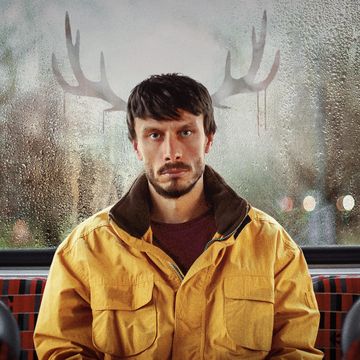
‘The Iron Claw:’ The Von Erich Family’s True Story
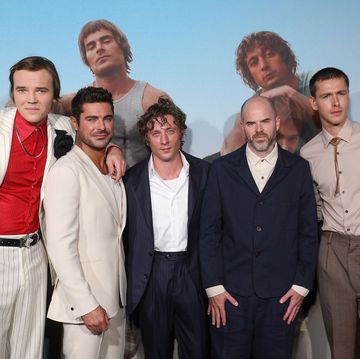
‘The Iron Claw’ Leaves Out a Von Erich Brother
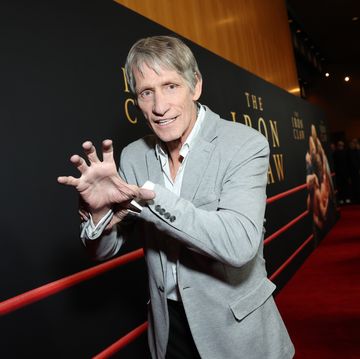
Where Is Kevin Von Erich Today?
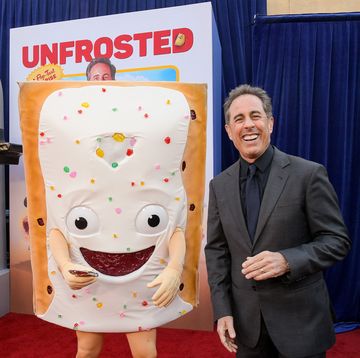
The True Story of Pop-Tarts and ‘Unfrosted’
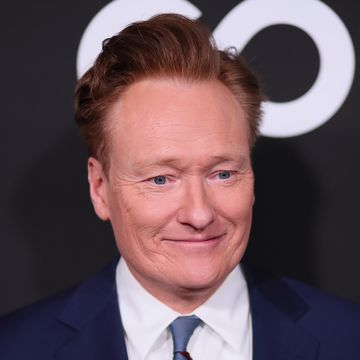
Conan O'Brien
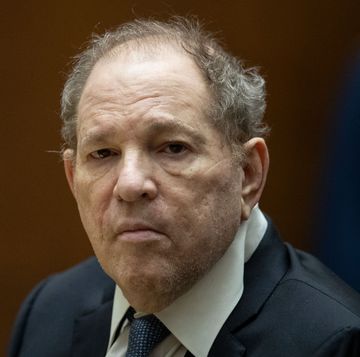
Harvey Weinstein
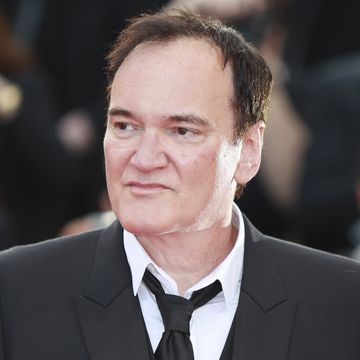
Quentin Tarantino’s Self-Imposed 10-Movie Limit
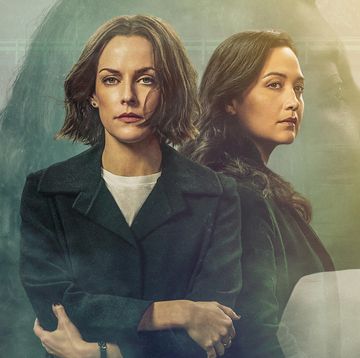
Reena Virk’s Murder Inspired ‘Under the Bridge’

Real Espionage Helped Inspire ‘The Sympathizer’
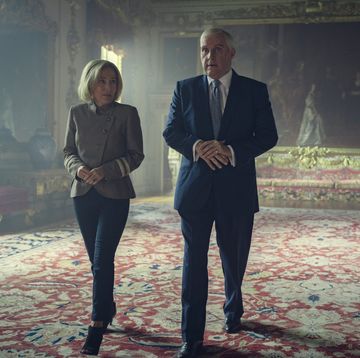
Prince Andrew’s ‘Scoop’ Interview, Explained
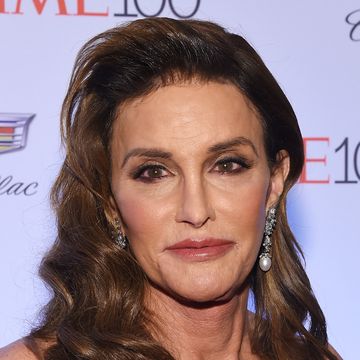
Caitlyn Jenner
Walt Disney (1901-1966)
Additional crew.
IMDbPro Starmeter See rank

- 66 wins & 47 nominations total

- Producer (uncredited)

- producer (uncredited)

- executive producer
- 38 episodes

- Mickey Mouse (voice, uncredited)
- 147 episodes
- Mickey Mouse (voice)

- Walt Disney (uncredited)

- producer adviser

- conception (uncredited)

- In-development projects at IMDbPro

Personal details
- The Walt Disney Company
- Mr. Walt Disney
- 5′ 10″ (1.78 m)
- December 5 , 1901
- Chicago, Illinois, USA
- December 15 , 1966
- Los Angeles, California, USA (complications from lung cancer)
- Lillian Disney July 13, 1925 - December 15, 1966 (his death, 2 children)
- Diane Disney
- Parents Flora Disney
- Relatives Robert Disney (Aunt or Uncle)
- Other works Grand Marshal, Tournament of Roses parade
- 5 Biographical Movies
- 29 Print Biographies
- 7 Portrayals
- 29 Articles
- 2 Pictorials
- 1 Magazine Cover Photo
Did you know
- Trivia Personally disliked Alice in Wonderland (1951) and Peter Pan (1953) because of the lack of "heart" and "warmth" in their main characters. Was very sad about the unfavorable reception of Fantasia (1940) as he was proud of the film. Ironically, the first re-issue of Fantasia (1940) after his death was the first time it turned a profit.
- Quotes I don't make pictures just to make money. I make money to make more pictures.
- Trademarks Happy endings on all pictures produced by himself (also posthumous and actual works).
- Salaries One Hundred and One Dalmatians ( 1961 ) $5,166 /week
- When did Walt Disney die?
- How did Walt Disney die?
- How old was Walt Disney when he died?

Related news
Contribute to this page.
- Learn more about contributing
More to explore
Recently viewed.
Animated Features
Explore Disney's rich heritage of animated stories.
Read more >
Animated Shorts
Join Mickey, Donald, Goofy and the gang on their adventures.
TV and Streaming
Enjoy the wonders of Disney from the comfort of your own home or on the go.
Disney Parks
Disney theme parks around the world are where the magic comes to life.

Theatrical releases
- 1964 - The Three Lives of Thomasina
- 1999 - The Timon & Pumbaa episodes " One Tough Bug / Pirates of Pumbzance " premiere on Toon Disney .
- 2000 - PB&J Otter premieres on Playhouse Disney with the episodes " The Big Surprise / Bazania Mania ".
- 2004 - Kim Possible premieres on Disney Channel with the episode " Ron Millionaire ".
- 2010 - The Wizards of Waverly Place episode " Dad's Buggin' Out " premieres on Disney Channel.
- 2017 - The Doc McStuffins episodes " Hannah the Brave / Waddly's Huggy Overload " premiere on Disney Jr.
- The Goldie & Bear episodes " Goin' Overboard / All Hail the Conquering Bear " premiere on Disney Jr.
- The Andi Mack episode " Better to Have Wuvved and Wost " premieres on Disney Channel.
- The Chicken Squad episodes " Critter Sitters / The Problematic Puppy " premiere on Disney Jr.
- The Bunk'd episode " Dancin' Up a Storm " premieres on Disney Channel.
- The Sydney to the Max episode " What's Eating Olive Rozalski? " premieres on Disney Channel.
- The second and final season of Gabby Duran & the Unsittables premieres on Disney Channel with the episode " Mom Wipe ".
- 2023 - The Raven's Home episode " Lizard Let Lie " premieres on Disney Channel.
- The High School Musical: The Musical: The Series episode " The Storm " premieres on Disney+ .
- The Star Wars: The Bad Batch episode " Decommissioned " premieres on Disney+.
- 2024 - The Acolyte premieres on Disney+.
VHS & DVD releases
- Oliver and Company : Special Edition
- Hocus Pocus
- Muppet Treasure Island
- V.I. Warshawski
- 2012 - Krippendorf's Tribe
Theme park happenings
- 2014 - Frozen Summer Fun! begins at Walt Disney World .
- 2021 - Avengers Campus opens at Disney California Adventure .
- Escape from the Isle of the Lost: A Descendants Novel
- The Lion King: The Novelization
- 2021 - Season 2 of Amphibia is added to Disney+ .
- 1925 - Joe Hale (animator, layout artist, and producer)
- 1956 - Keith David (actor and voice actor)
- 1968 - Scott Wolf (actor and voice actor)
- 1969 - Horatio Sanz (actor, voice actor, and comedian)
- Russell Brand (comedian, actor, radio and television presenter, singer, columnist, and author)
- Angelina Jolie (actress, voice actress, film director, producer, and humanitarian)
- 1981 - T.J. Miller (actor, voice actor, stand-up comedian, producer, and writer)
- 1996 - Maria Bakalova (actress and film producer)
- 2011 - Betty Taylor (actress, singer, and dancer)

- General Disney
- Programs/Channels
- Video Games
- Miscellaneous

If you see this, your JavaScript might be disabled or DiscordIntegrator plugin isn't working. If the latter, please contact a wiki administrator.

- Disney Channel

Go to these sites for info or for help with your own wiki!
The 7D • Aaron Stone • Avengers Assemble • The Avengers: Earth's Mightiest Heroes • Atomic Puppet • Bandbudh Aur Budbak • Big City Greens • Big Hero 6: The Series • Billy Dilley's Super Duper Subterranean Summer • Commando Crash • Crash & Bernstein • DuckTales • Fangbone! • Future-Worm! • Gamer's Guide to Pretty Much Everything • Gaming Show (In My Parents' Garage) • Gravity Falls • Hulk and the Agents of S.M.A.S.H. • Guardians of the Galaxy • I'm in the Band • Kick Buttowski: Surburban Daredevil • Kickin' It • Kirby Buckets • Lab Rats • Lab Rats: Elite Force • Lucky Fred • Marvel's Spider-Man • MECH-X4 • Mighty Med • Milo Murphy's Law • Motorcity • Pair of Kings • Penn Zero: Part-Time Hero • Phineas and Ferb • Pickle and Peanut • Randy Cunningham: 9th Grade Ninja • The Savages • Star Wars Rebels • Star vs. the Forces of Evil • TRON: Uprising • Two More Eggs • Ultimate Spider-Man • Wander Over Yonder • Xiaolin Chronicles • Yo-kai Watch • Zeke and Luther